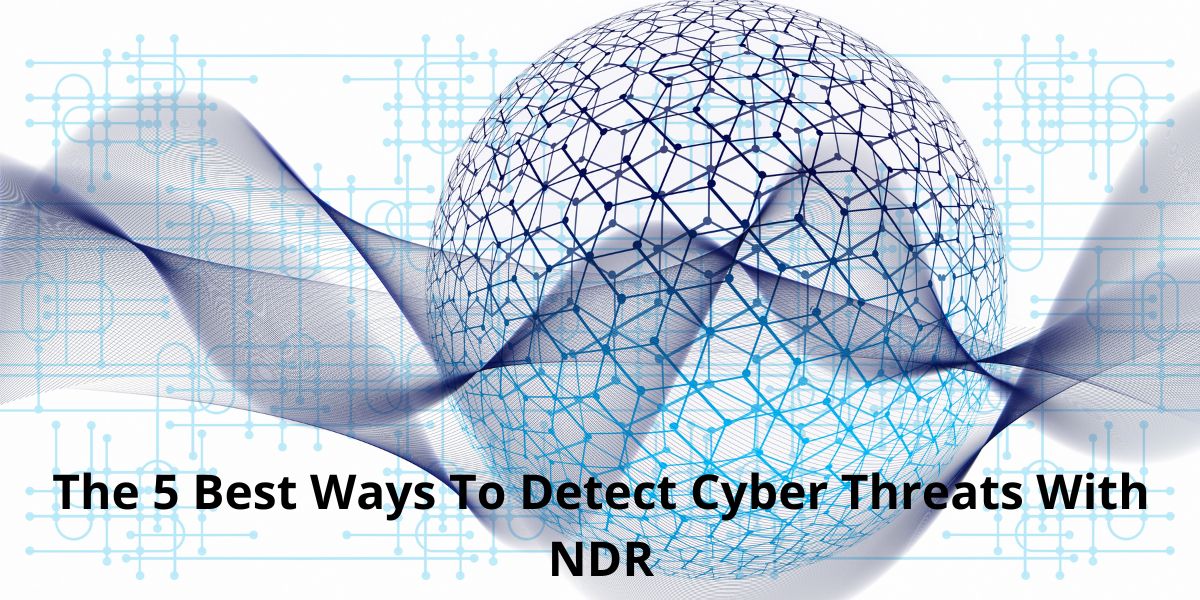The 5 Best Ways To Detect Cyber Threats With NDR
It’s no secret that cyber threats are increasing by the day, with more and more companies being hacked every year. If you don’t have an effective method of detecting cyber threats, you could be putting your company in danger without even realizing it. Don’t fall victim to attacks – start using NDR today to detect threats before they can do real damage! Here are the 5 best ways to detect cyber threats with NDR.
1) Use Symantec Email Security.
Symantec Email Security is a great way to protect your business from cyber threats. It uses a variety of methods to detect and block potential threats, including heuristics, reputation checking, and sandboxing. It’s constantly updated with the latest threat intelligence, so you can be sure your business is protected. Plus, it’s easy to use and manage, so you can focus on running your business, not worrying about cyber threats.
2) Continuously monitor the Dark Web.
There are many ways to detect cyber threats, but one of the best is to continuously monitor the Dark Web. By doing this, you can see what new threats are out there and take steps to protect your business. Here are five ways to do it
First, it’s important to know what is considered the Dark Web. Essentially, it is a part of the Internet that cannot be accessed with traditional web browsers like Chrome or Firefox. Instead, you will need to use Tor or I2P in order to access it. The Dark Web isn’t inherently dangerous; there are many benign uses for it. However, nefarious types also use it for illicit purposes such as buying and selling drugs, weapons and other illegal items on online black markets such as Silk Road. This means that if you can monitor these sites, you can learn which criminals are active on them and take steps to protect your business from them
3) Stay up to date on current threats.
The best way to stay up to date on current threats is to have a strong network detection and response (NDR) system in place. Here are five ways an NDR system can help you detect and respond to cyber threats.
A network detection and response (NDR) system has a few key capabilities that make it an effective cybersecurity tool. For example, it can monitor for suspicious activity across your network, filter false positives and prevent threats from spreading across your network. It should be able to detect whether a computer on your network is already infected by malware, or if one of your users is opening suspicious email attachments. This may seem like a lot to ask from one tool, but today’s solutions can do all of these things—plus much more. A good solution will give you information about what’s happening on every machine on your network in real-time so you can pinpoint problems quickly and decide how to proceed based on what you see.
4) Secure Email Protocols.
One of the best ways to detect and prevent cyber threats is to use a secure email protocol. This ensures that your emails are encrypted and cannot be read by anyone who does not have the proper key. Some of the most popular secure email protocols include PGP, S/MIME, and TLS.
PGP (Pretty Good Privacy) is one of the most popular forms of encryption. PGP encryption works by using a public key to encrypt data and only allowing decryption with a private key, which is usually reserved for you and your contact. S/MIME (Secure/Multipurpose Internet Mail Extensions) was also developed by Pretty Good Privacy, but it is compatible with other email clients. The encryption and decryption keys are stored on an email server, meaning that you can use S/MIME with any email client. TLS (Transport Layer Security) has been adopted as an industry standard and has been implemented in popular web browsers like Mozilla Firefox, Google Chrome, Internet Explorer, Opera, Apple Safari and Microsoft Edge to name a few.
5) Trust no one.
- Use a good antivirus program and keep it up to date.
- Use a firewall and configure it properly.
- Be careful about what you download and install.
- Keep your operating system and software up to date.
- Use strong passwords and don’t reuse them.
- Be aware of phishing attacks and don’t click on links or open attachments from unknown sources.
- If you suspect that your computer has been compromised, run a malware scan with a reputable security program.




